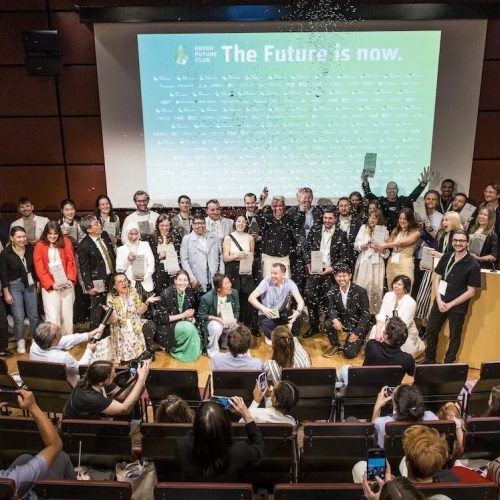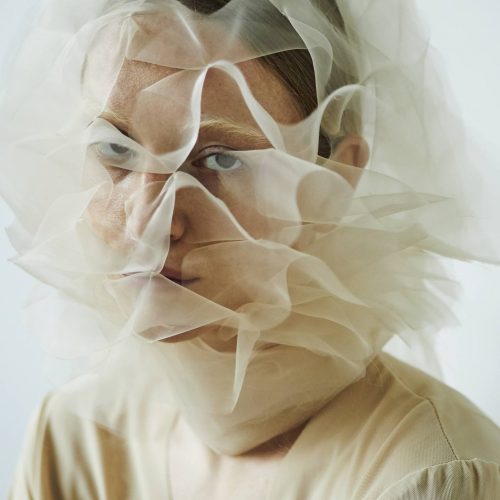The 2020 Beyond Plastic Award Winners
The global online platform for eco-designed solutions BeyondPlastic.Net has announced the winners of the 2020 Beyond Plastic Award. The award honors innovation and creativity in sustainable design in four categories: most practical impact to reduce the use of plastics; most innovative approach; most beautiful solution; and best initiative in education / journalism / campaigning.
BeyondPlastic.Net is a global initiative dedicated to reducing the use of single-use plastic products in order to decrease plastic pollution that litters landmasses, enters water streams, and presents an increasing risk to human and environmental health worldwide.
Beyond Plastic's Award is directed toward students, designers, engineers, makers, creators, inventors, and artists. Anyone who had an idea, concept, project, prototype, or solution already in market to support less plastic use was welcome to take part. For each of the award’s four categories, there are Bronze, Silver, and Gold awardees who received trophies and cash prizes that totaled over 7,000 Euros combined.
MOST PRACTICAL IMPACT TO REDUCE THE USE OF PLASTICS
BRONZE: Waxy by Ecosoc
Mohamed Hassan Mahamad, Mohamed Abdirashid Farah, and Shamso Hussein (Somalia)
Ecosoc created an innovative chemical-free and energy-conserving plastic extrusion technology called “Waxy ıı Technology” to recycle and transform waste plastics, packaging materials, and agricultural waste into durable and environmentally friendly roof tiles, interlocking bricks, paving stones, and plastic lumbers. Ecosoc collects waste from households, businesses, and municipal markets and takes it to decentralized sorting sites where it gets sorted into more than 40 fractions. They then compost the organic waste into high-quality compost. Waxy products are durable, cost effective, aesthetic, insect resistant, and easy to work with.
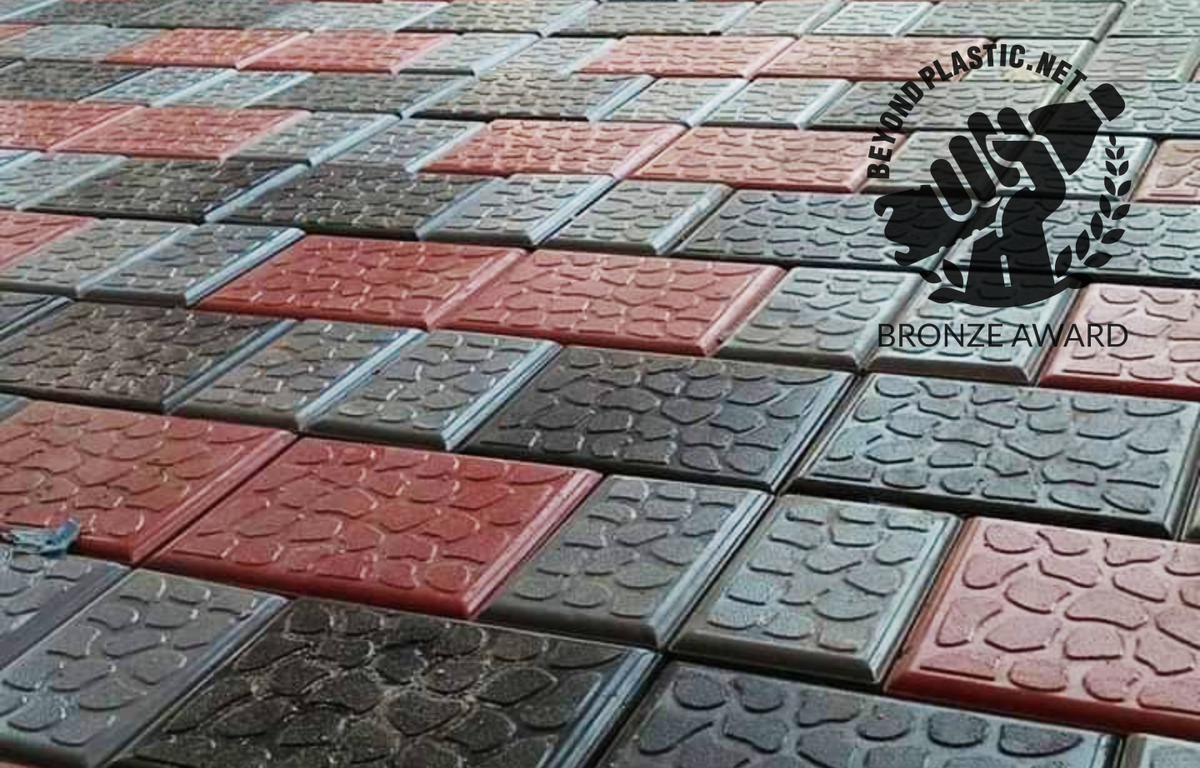
SILVER: Coolpaste – Think outside the box!
Allan Gomes (Brazil)
Coolpaste developed a sustainable packaging design for toothpaste that doesn’t affect durability while the toothpaste is being transported or stacked on shelves. Coolpaste uses impermeable cardboard, which is similar to the material used by the food industry. The cap of the tube is biodegradable and made from Polylactide (PLA), a bioplastic derived from renewable resources such as corn starch, tapioca roots, starch, or sugarcane.
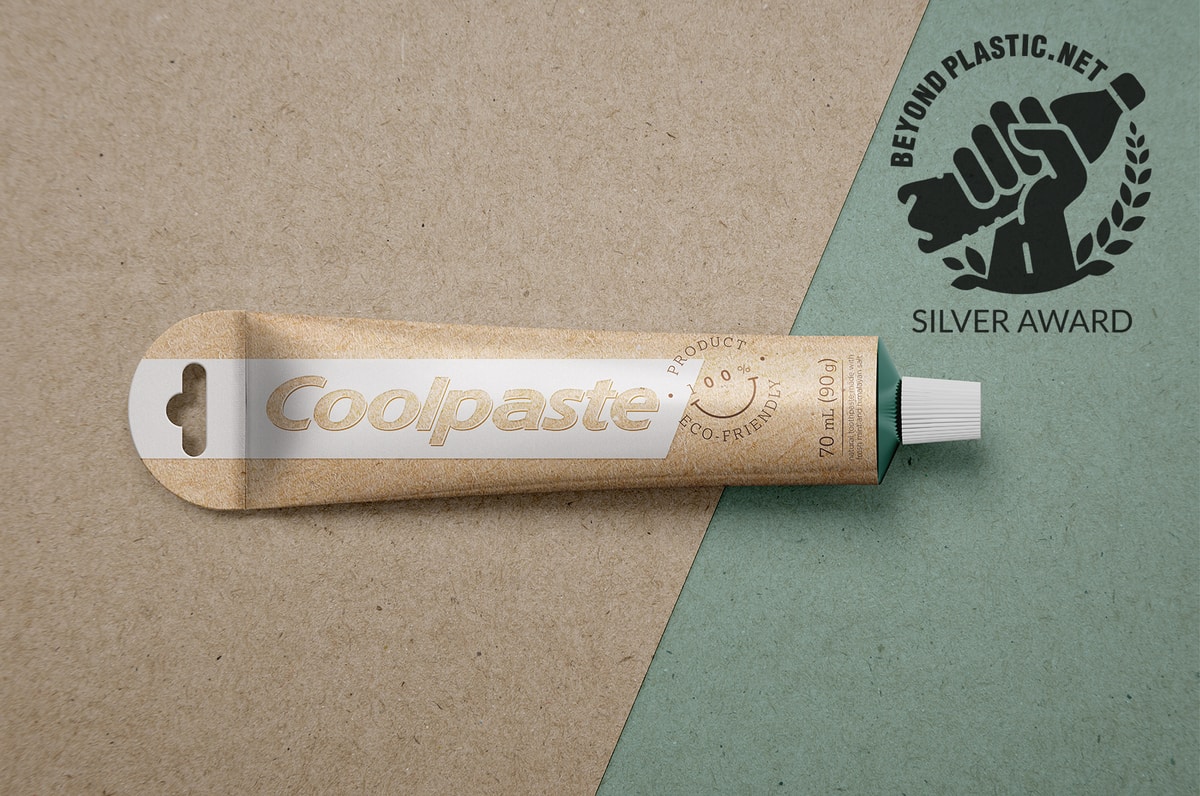
GOLD: Unpack Less, Peel More
Elena Amato, Ponto Biodesign (Brazil) & Caroline Pagnan (Universidade do Estado de Minas Gerais)
Following circular design guidelines, this project aimed to create packaging that enables materials to flow in integrated and regenerative loops. The packaging system was created for handmade personal care products that are manufactured locally with natural ingredients. The project consists of a collection of five different packages, each of them with three layers: the internal layer is the personal care product, the second layer is made of solid natural soap and serves as a container for the previous layer, and the external layer is made out of bacterial cellulose. The packaging system is fully compostable, made from renewable sources, and has a fast growth rate.
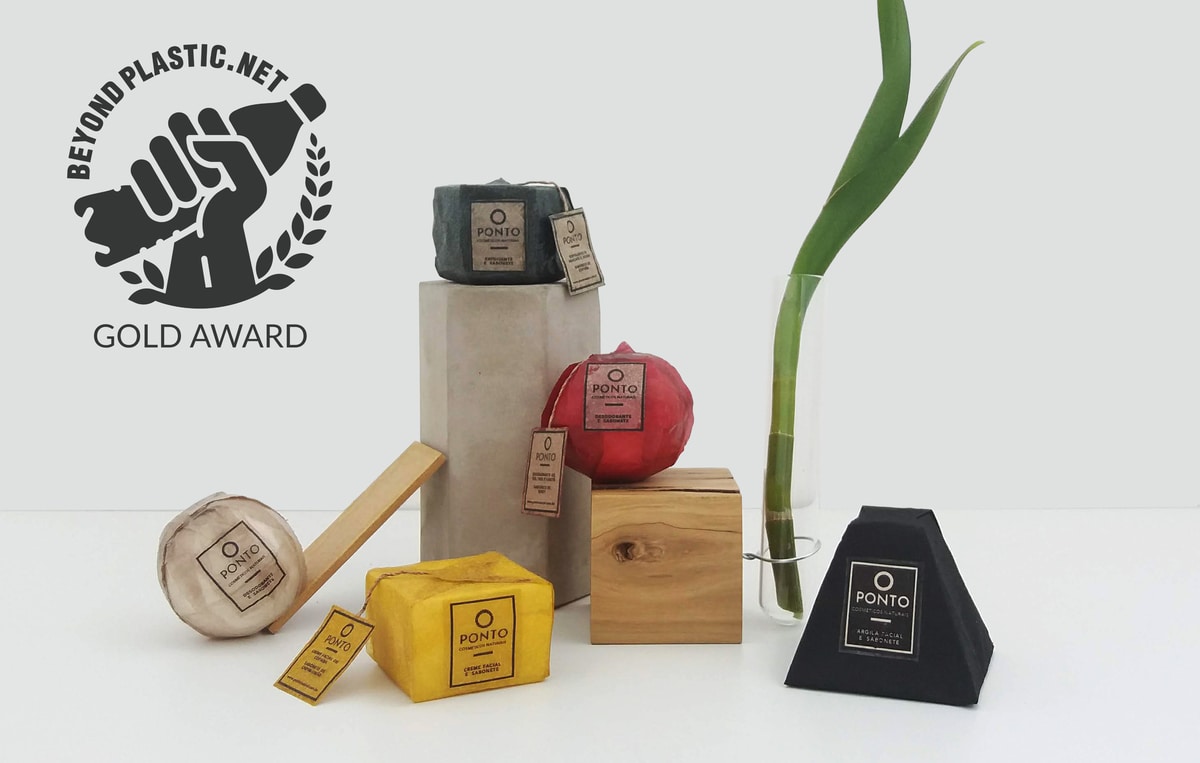
MOST INNOVATIVE APPROACH
BRONZE: PLANT plASTIC!
Cinzia Ferrari (United Kingdom)
Cinzia Ferrari’s PLANT plASTIC! is packaging material that doesn’t contain any toxic ingredients and that doesn’t become waste. At the end of its use it takes on a new life form by growing into a house plant. By growing into a plant, CO2 is absorbed from the air and single-use packaging consumption is reduced. The material is made of sodium alginate, plant seeds, and Azospirillum Brasilense, which is a soil bacteria that’s harmless to humans and that promotes plant growth because of its nitrogen-fixing properties.
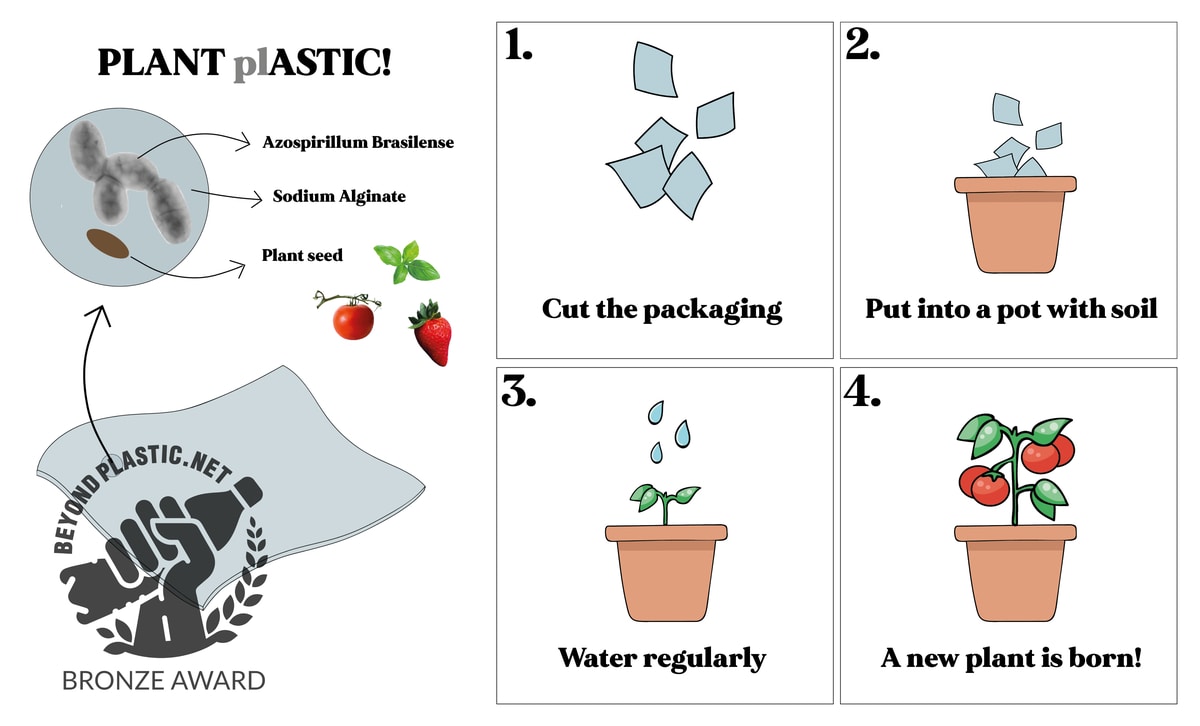
SILVER: The Shellworks
Insiya Jafferjee and Amir Afshar Edward Jones (United Kingdom)
The Shellworks creates packaging for the cosmetic, beauty, fashion, and retail industries from food waste. They make bottle caps, jars and pots, and secondary packaging from biopolymers that are created from food waste. The Shellwork’s secondary packaging products like trays and boxes are made from Chitosan, an abundant polysaccharide found within shellfish waste. 90% of their products are made from waste sources such as shellfish waste, food waste, or waste fibers.
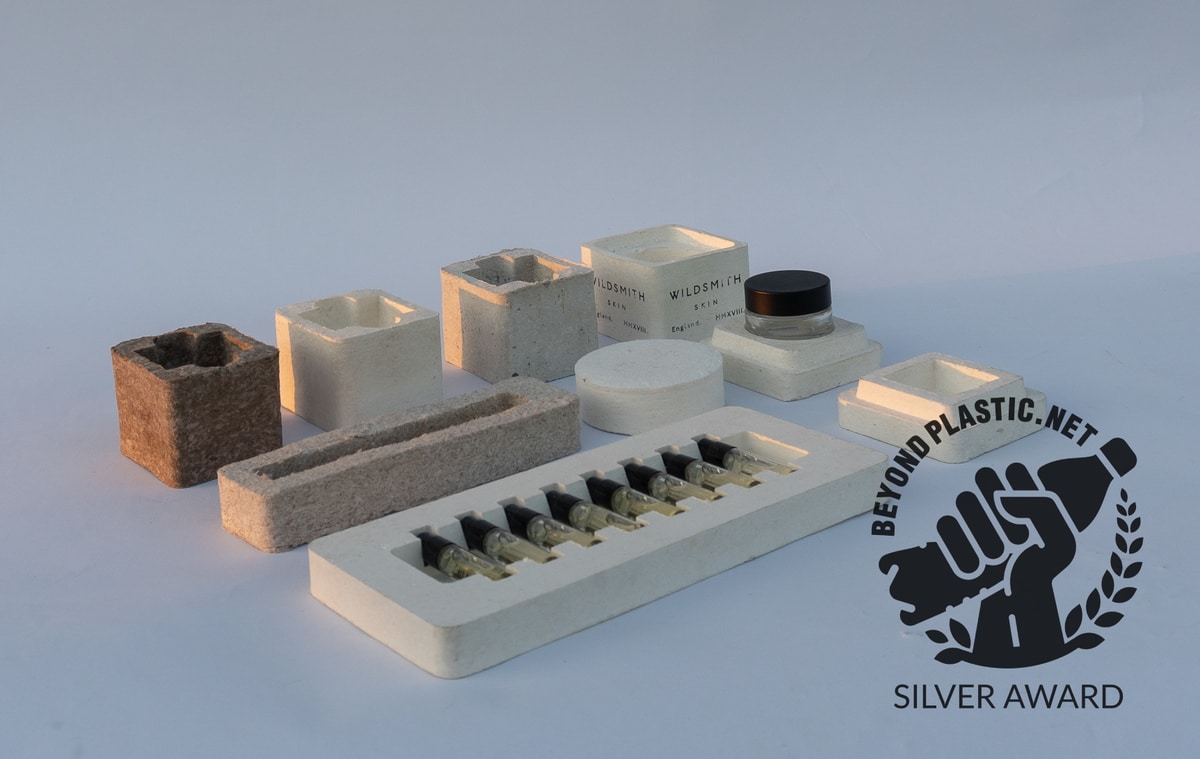
GOLD: The Item Bag 2.0: Packaging That Dissolves!
Jack Cleary and the Wastebased Team (United Kingdom)
Wastebased upgraded the poly bag by creating a biodegradable, non-toxic, carbon-negative storage bag that’s made from a polymer similar to the material used to coat dishwasher/laundry tablets. Wastebased poly bags can be disposed of by dissolving them in boiling water. The resulting solution contains mineralised biomass and non-toxic ink, and can be poured directly down the sink.
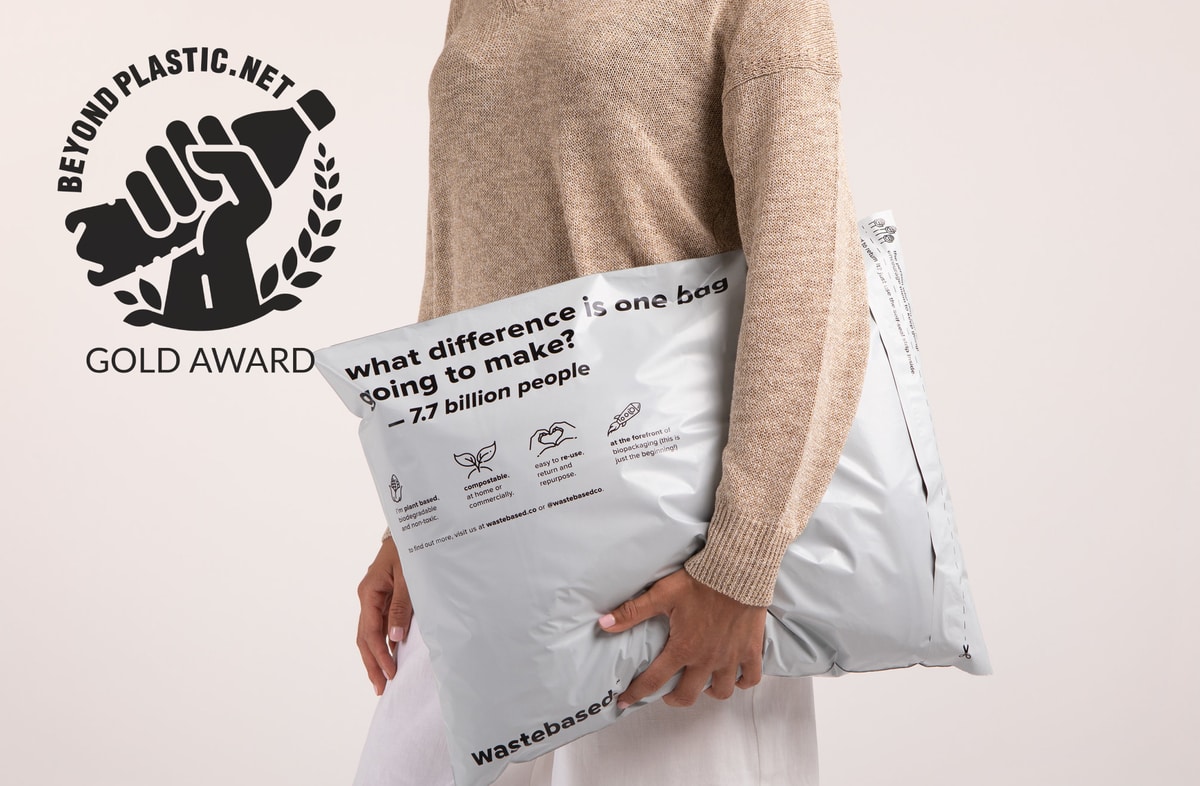
MOST BEAUTIFUL SOLUTION
BRONZE: Desintegra.me
Margarita Talep (Chile)
Margarita Talep is an industrial designer based in Santiago, Chile. Desintegra.me intends to replace single-use plastics with a new material extracted from algae. The Spanish term “Desintegra me” implies that it will “disappear” after using it. Pigments are extracted from the skin of discarded fruits and vegetables. The material can have different degrees of flexibility, and can be rigid and brittle to flexible and elastic. It degrades naturally over a period of 2 to 4 months depending on the atmospheric conditions.
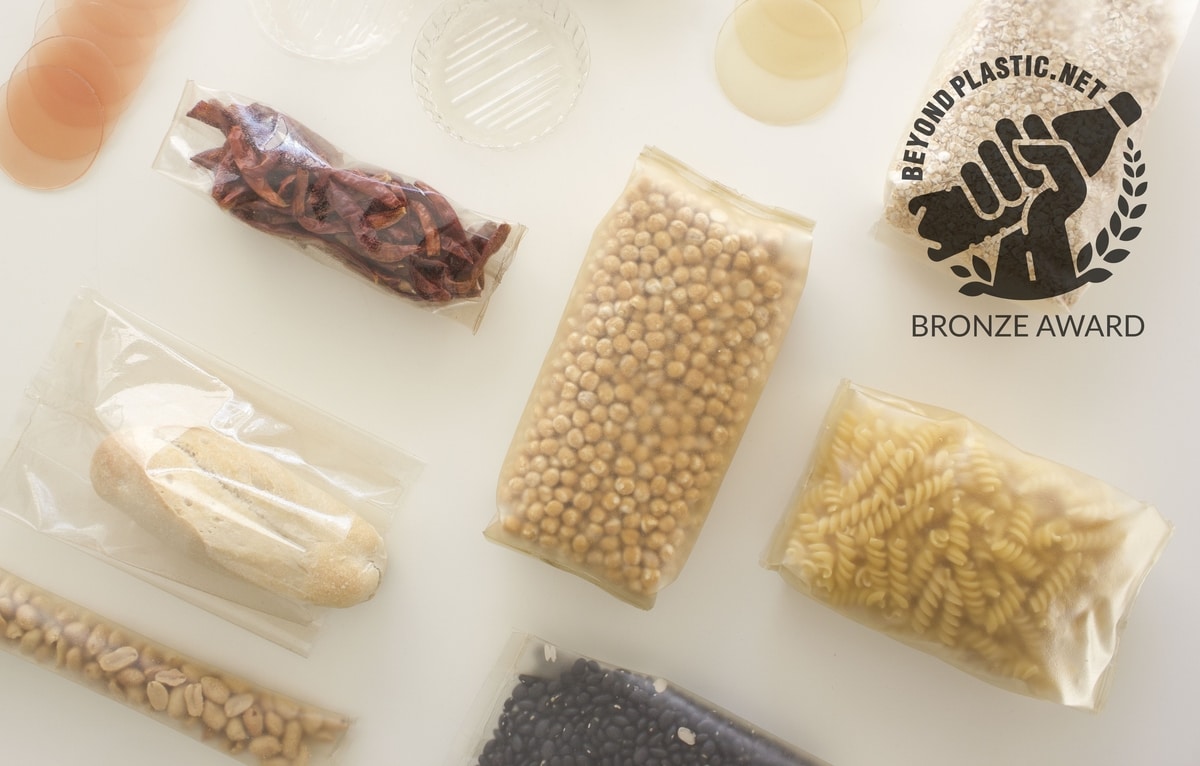
SILVER: Aqua Faba Foam
Paula Nerlich (Germany)
Material Designer Paula Nerlich is developing a bioplastic based on aquafaba from chickpeas as part of her research into circular, compostable biomaterials. The material, which is currently under development, shows great potential for mechanical manufacturing and thus for industrial production. The biomaterial varies in color from cream white to pink, and changes its color over time. The structure can be flexible or hard, and the biomaterial is completely vegan and biodegradable.
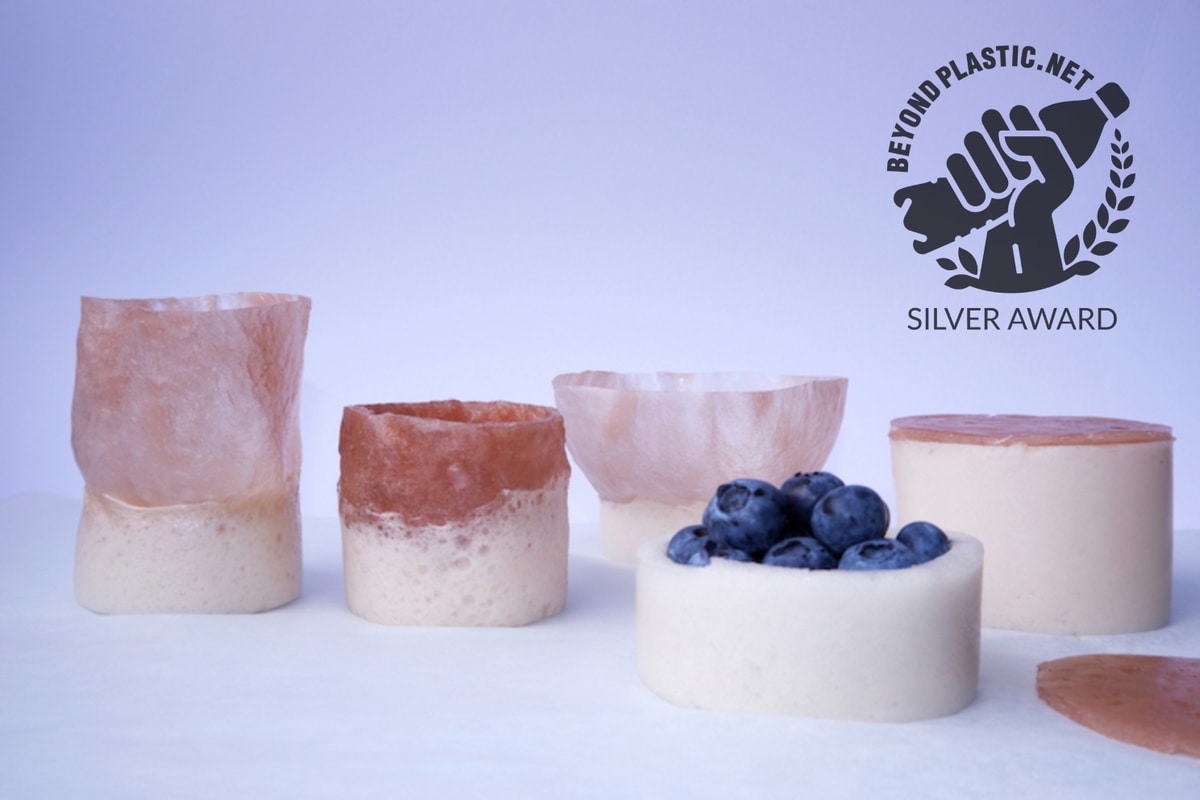
GOLD: Shell Homage – Bio Material Out of Egg & Nut Shells
Rania Elkalla (Germany)
Shell Homage is a biodegradable composite material that’s made from egg and nut shells. It’s completely biodegradable and can decompose when no longer in use. It can be used in several industries such as product design, interior design, 3D filament consumable goods, and jewelry design.
BEST INITIATIVE IN EDUCATION/JOURNALISM/CAMPAIGNING
BRONZE: Dopper Changemaker Challenge Junior
Anneke Hendriks, Chrissie van Heijnigen, Dopper, Anne Sallaerts, and Designathon Works (Netherlands)
Dopper, a Dutch Social Enterprise selling reusable water bottles, launches initiatives like the Dopper Changemaker Challenge Junior, which is an international competition for children aged 8 to 12 that challenges them to develop solutions to single-use plastic pollution in oceans. The international competition is accessible for teachers, who can take part with their pupils, or for children independently. Children can upload their sketches on the Dopper website where they have a platform to display their ideas and solutions. A winner is announced by a jury and together a prototype of their solution is built and displayed in public.
SILVER: BIOMATERIALS: A new Cultural Statement
Maria Jose Besoain and the LABVA Team (Chile)
This experimental biomaterials lab is located in Valdivia in the south of Chile. LABVA aims to bring science closer to the community, focusing especially on new materials or open biomaterials and creating a culture around these new materials. LABVA crafts polymers from algae, fish offal, seashell offal, or food waste. They return local organic agroindustrial waste back to the productive cycle through the creation of a biomaterial.

GOLD: Choose the Reusable Cup
Ilian Iliev and Evgenia Tasheva (Bulgaria)
In Bulgarian public kindergartens, children between 3-7 years drink water almost exclusively from disposable plastic cups. “Choose the reusable cup” project started as a local community initiative in a state kindergarten in Varna, Bulgaria. Sabina Maksimova, a mother of two, proposed a solution: a reusable metal cup, engraved with a unique symbol for each child. Later, this community initiative received the support of a local ecology organization, Public Environmental Center for Sustainable Development. The mission of the “Choose the reusable cup” project is to change perceptions and consumption norms, so that caring about the environment and healthy living will be more valued.
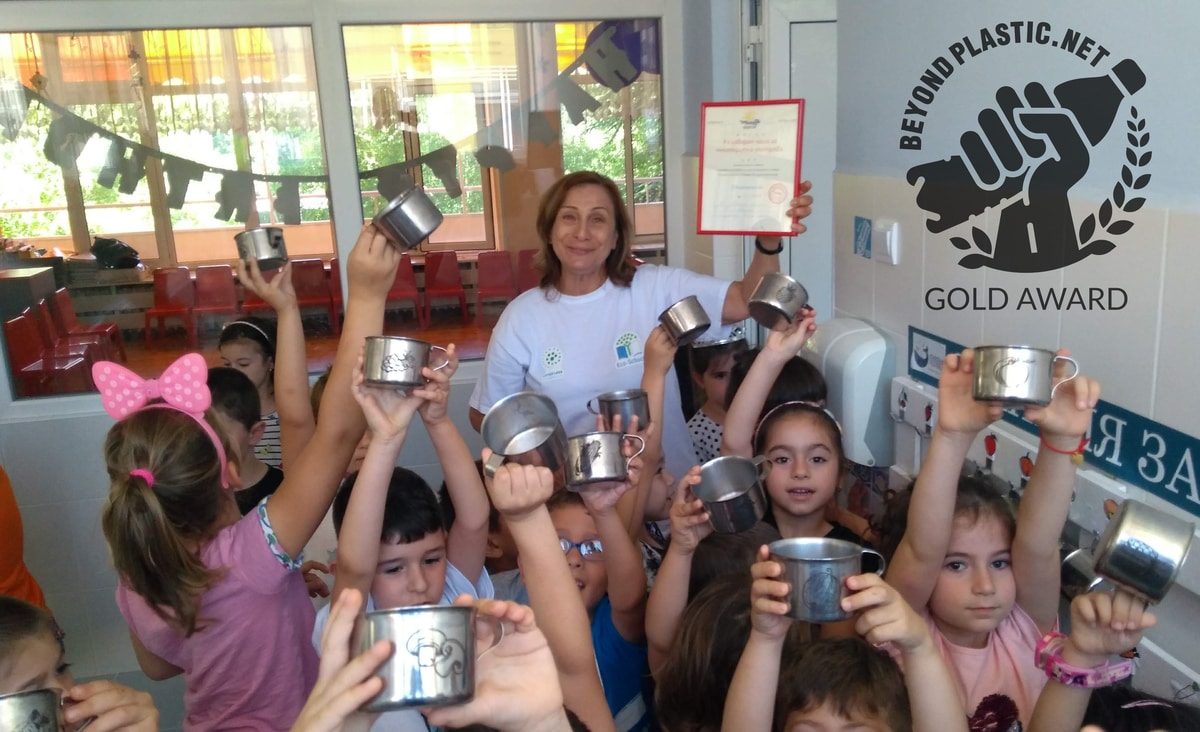
GOLD: U-RETAIN
John Emmanuel Kachakwale and Beatrice Phiri (Zambia)
Plastic waste remains one of the main land pollutants in Lusaka and Zambia. The U-Retain is an environmental initiative that seeks to use plastics as purchasing power for educational basics like books, pencils, and school bags. The initiative also allows less privileged kids to buy light food stuffs and sanitary pads using plastic. The collected plastics are sold to recycling companies at a reasonable monetary amount.
All photos courtesy of BEYONDPLASTIC

Jessy Humann lives and writes out of Spokane, Washington. When she's not writing about sustainable fashion and why it's important, she loves to write poetry and do other types of creative writing. Her first children's book comes out next year. Connect with Jessy on LinkedIn.

